The Edge of Chaos, Chaos, and Heroism
The edge of chaos may also be thought of as a “place” to which a living system — a genome, a cell, an embryo, an organism, an ecosystem, the biosphere — can return in order to be revitalized after it has, as the result of some perturbation, external or internal, been pushed over into the chaotic regime. In this sense, the edge of chaos functions as Mother Nature’s own personal health spa — or, as a sort of cosmic Betty Ford rehab clinic.
 |
| Roger Lewin's Complexity: Life at the Edge of Chaos |
Lewin was asking theoretical biologist Stuart Kauffman, author of At Home in the Universe, to explain the Cambrian explosion. Six hundred million years ago, it seems, the world’s oceans teemed with a plethora of single-celled life forms – bacteria, algae, etc. – but as yet no multicellular life. Then, boom! In a geological heartbeat there appeared, in the waters of the earth, not just a smattering of many-celled body plans — or, in biologist-speak, phyla — but a hundred or so of them, all at once.
This, the so-called Cambrian explosion, was a unique event in the earth’s biohistory. Afterward, in short order, all but the thirty or so of these new phyla — the ones we still have today — went extinct. After that time, there were no more major phyla-creating episodes.
In ensuing geological eras, though, there were occasional mass extinctions of species, followed by rapid bursts of new species that were all created within existing phyla. As a result, the aggregate number of species that have appeared on the face of this planet proliferated vastly – although 99.9 percent of them would succumb to later extinctions.
One of the greatest of these mass deaths happened 250 million years ago, when the Permian extinction wiped out about 96 percent of the species that existed at the time. In rebounding from that catastrophe, the planet’s biosphere created a wealth of new species – but no additional phyla.
What, then, explains the distinction between the relatively high-level creativity in the Cambrian (i.e., at the level of phyla) versus the relatively low-level creativity of the post-Permian (at only the level of species)?
Science offers several possible explanations, any or all of which may capture part of the overall picture. The one posited by Stuart Kauffman in Levin's Complexity interests me because it involves the edge of chaos. The basic idea is this (see p. 69). The Cambrian biosphere was “a system in the chaotic regime, a system that was moving toward, but had not yet reached, the edge of chaos.” Accordingly,
... perturbations would cause big avalanches of change [with] unusually innovative novelties. As the system coevolved to a balanced state (the edge of chaos, in Stu’s coevolution model), responses to perturbation would diminish … until a steady turnover state was reached.
Then, after a very, very long time, along came the Permian extinction. In response to some significant disturbance of the biosphere, rafts of old species died out, to be replaced by boatloads of new ones — though not this time augmented with any new phyla.
Why no new entries at higher taxonomic levels? Says Kauffman, “All you would need to explain the difference of innovation after the Permian extinction is that the system is pushed again into the chaotic regime, but not as far. Innovation would occur in the postextinction rebound, but would be less exaggerated.”
To me, this suggests a general pattern to life. Left to its own devices, life spends most of its time in a steady, balanced state at the edge of chaos — or perhaps in the ordered regime not too far from the edge of chaos. Whatever potential living systems may possess for chaos, they are also in some marvelous way also biased away from it, toward order.
But, then, stuff happens. When it does, an orderly living system can be pushed deeply or shallowly into chaos by the associated perturbation. When that occurs, parts of the system — if not the whole system — may die. Providentially, though, a coevolutionary dynamic can be set up within the living system, by dint of which the perturbed system qua system can hold onto life and eventually recover its erstwhile poise at the edge of chaos.
As it is recovering, the system is, in a burst of creativity, revitalizing itself. And how profoundly creative the burst is depends on how far into the chaotic regime it had earlier been pushed!
After the whole episode has run its course, the system finds itself rejuvenated. The once and future king again sits on his throne. God’s in his heaven, and all’s right with the world.
It's as if a living system were some kind of hero. Things are going along smoothly for it in a dynamical locale near or precisely at the edge of chaos. Then, pow! Some kind of perturabation happens, and the system is over in chaos proper, where it cannot long survive.
This amounts to the canonical call heard by every hero in every hero saga. If he doesn't heed this call, he, along with all that he cares about, will be gone with the wind. Our hero is typically represented as, until his hand is forced by circumstance, reluctant to act. In this case, it is the unwarranted "perturbation" which forces our system's heroic hand.
Once motivated, the hero takes up his sword, or whatever, and at great personal risk saves the day. The hero's perils are the storybook analogue to the avalanches of creative change, the side effects of the "heroic" activity of restoring the system to life at the edge of chaos. Change, however creative, is always accompanied by peril.
And the eventual restoration of tranquility at the edge of chaos? Its storybook analogue is the peaceable kingdom that was brought to England, eventually, by King Arthur and his heroic Knights of the Round Table.
Jesus was the ultimate hero, to a Christian such as myself. Think of what he did. He freely accepted death on a Cross in order to bring into being the peaceable "kingdom of heaven," which, during his life, he always said was at hand. After his death and before his resurrection, Jesus Christ "descended into hell," says the Apostle's Creed — into, that is, the abode of the dead. This "harrowing of hell," as it has been called, is the analogue of a descent into chaos.
It is important to the standard theology of Christ, the world's ultimate hero, that his crucifixion was freely accepted — just as every hero in every hero saga must at some point agree to go on his own "hero's journey."
Perhaps this is the significance of Jesus's ability to walk on water. Drowning is a metaphor for both death and chaos. Walking on water signifies that, should he ever die, the water-walker has freely accepted his own death.
Here, then, is a point of tangency between the theory of evolution "beyond Darwin" and the wisdom of one of our major faith traditions. To imagine Jesus's "hero's journey" as an analogue of a descent into the dynamical regime of chaos furnishes a possible bridge between science and religion.
Of course, we are all the heroes of our own lives. In every life there are junctures, our own personal Cambrian explosions, when we go through "phase transitions" to maturity. We are challenged by some "perturbation" such as the onset of puberty, and if we are to live, we must accept our peril and change. (But see the post Modern Immaturity in my A World of Doubt blog for some reflections on how, in our modern Peter Pan culture, we have abandoned the rites of passage that traditionally bring maturity.)
We have to stand ready to move from the edge of chaos into chaos proper and fight our way back out again. For it is the return trip wherein lies our personal growth.






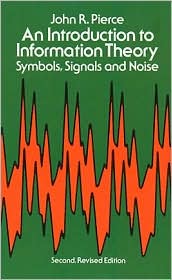

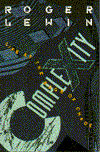
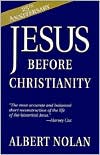
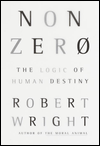

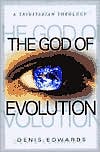





0 Comments:
Post a Comment
<< Home